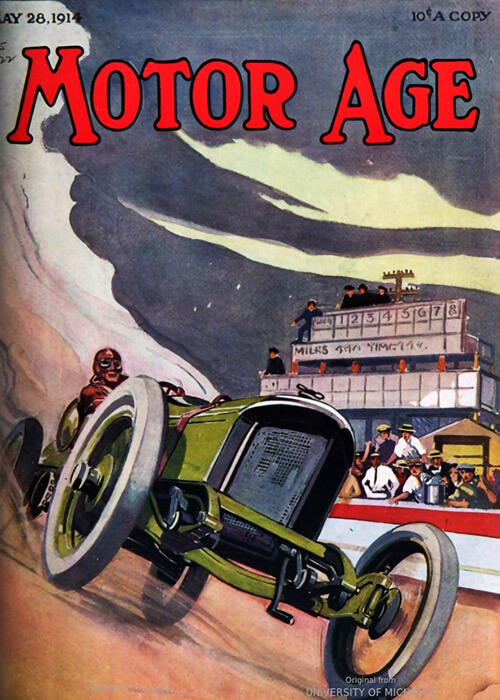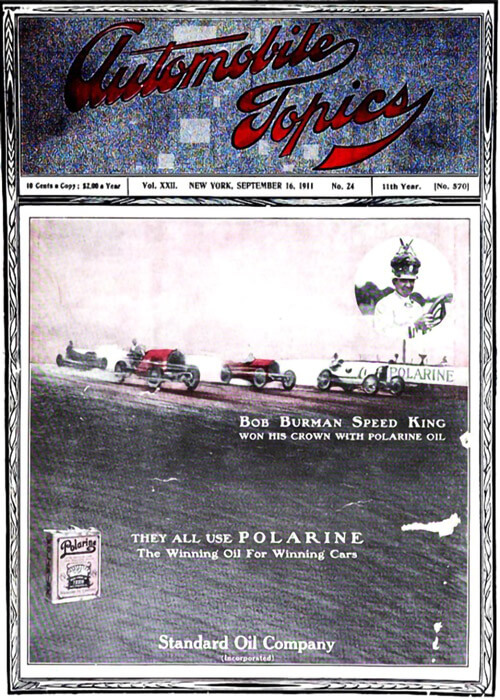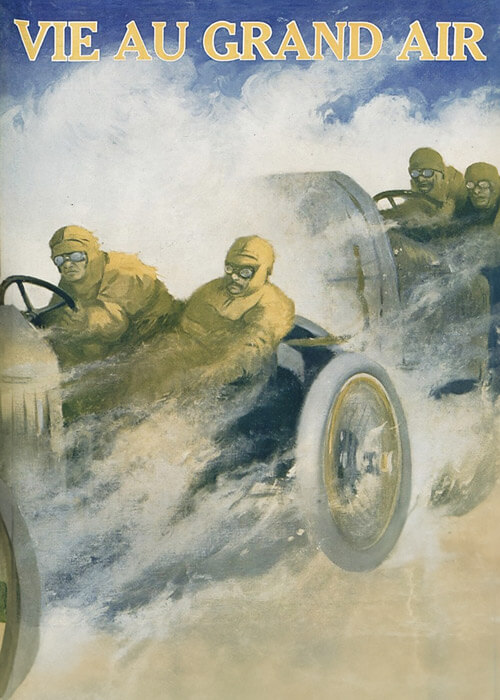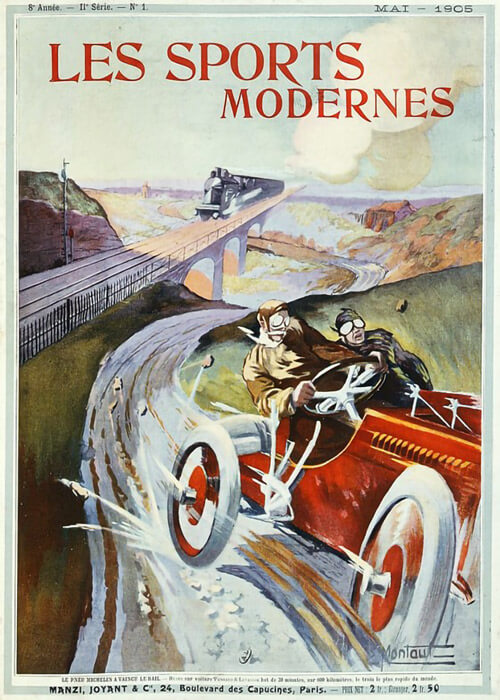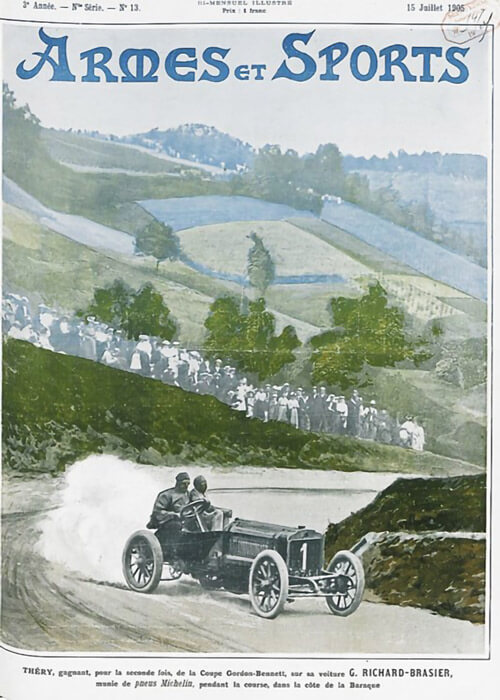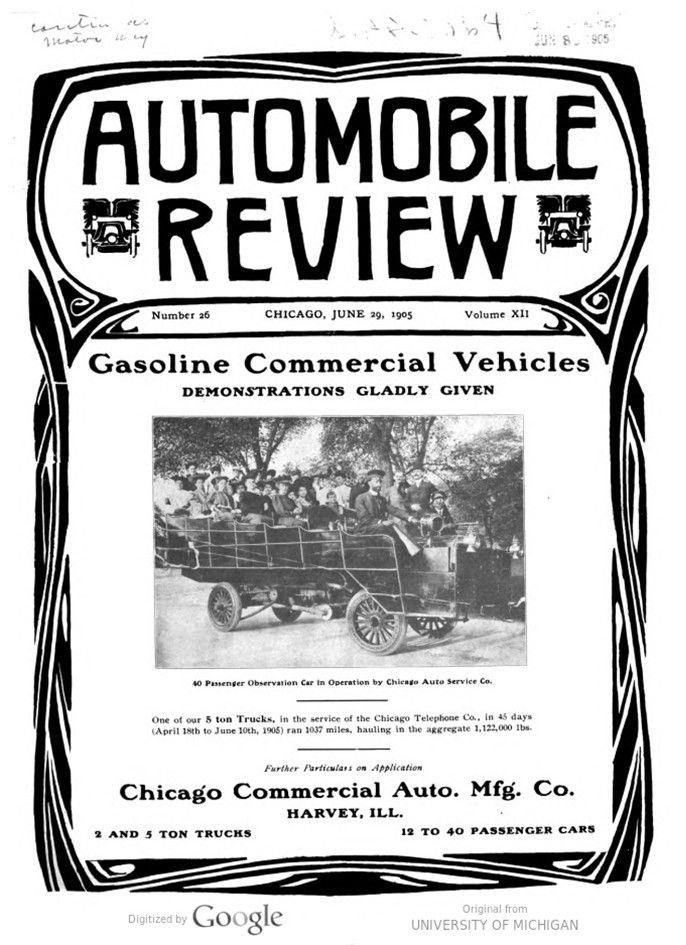
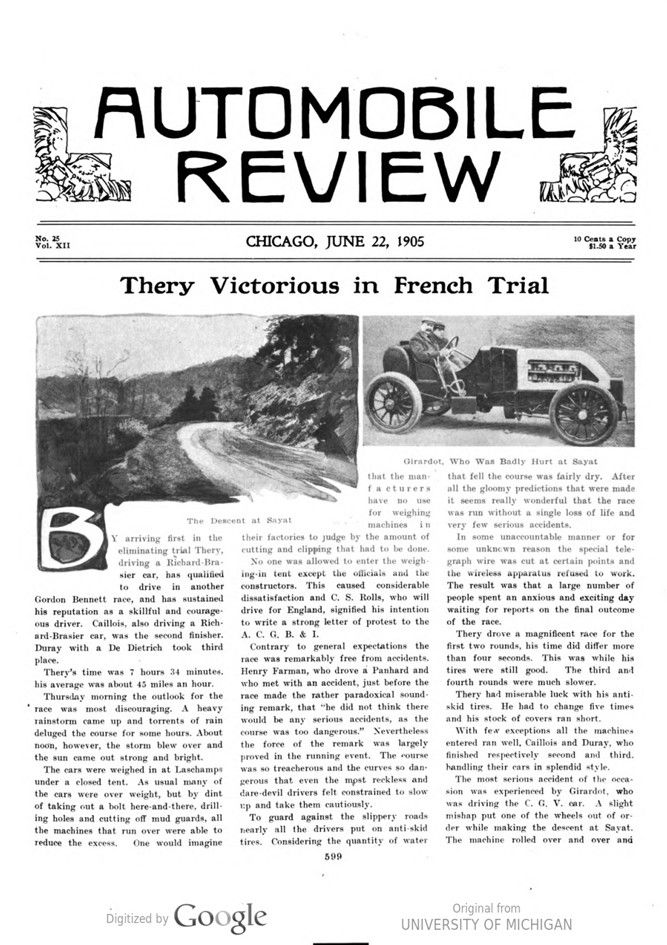
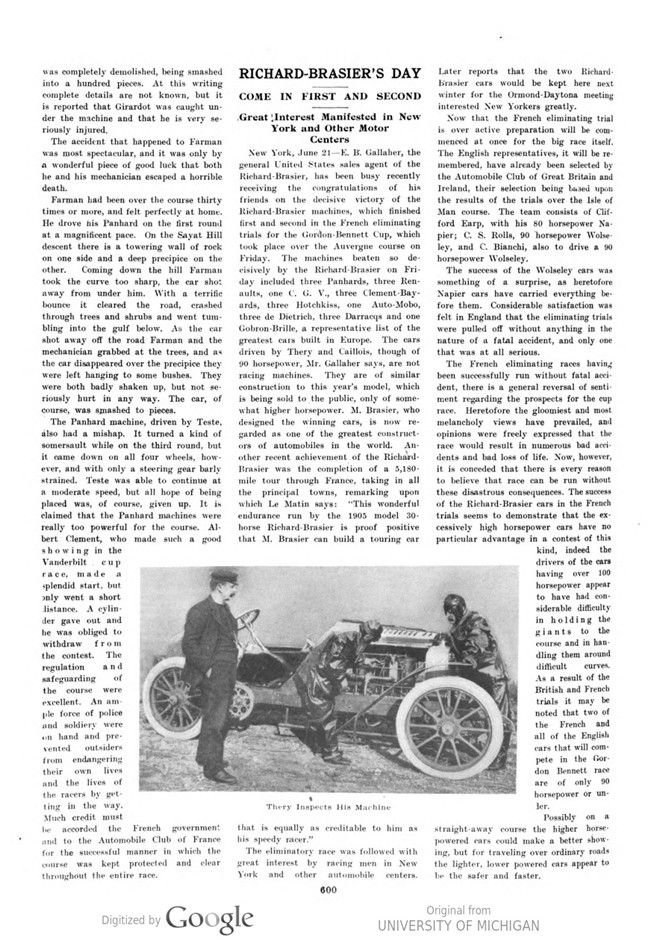
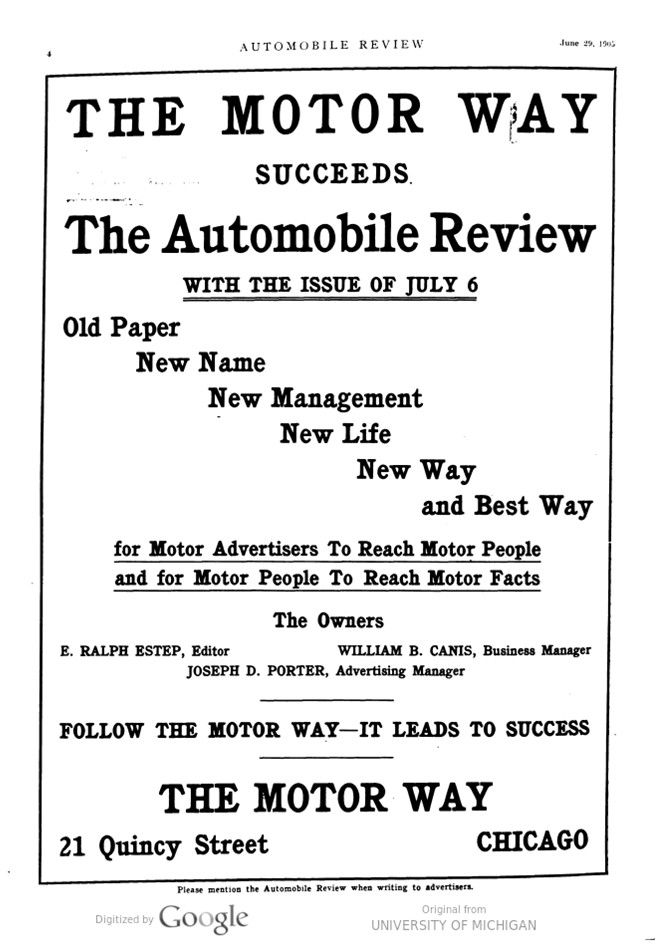
Text and photos with courtesy of hathitrust.org hathitrust.org, compiled by motorracingistory.com
Automobile Review, Vol. 12, No. 25, June 22, 1905
Thery Victorious in French Trial
BY arriving first in the eliminating trial Thery, driving a Richard-Brasier car, has qualified to drive in another Gordon Bennett race, and has sustained his reputation as a skillful and courageous driver. Caillois, also driving a Richard-Brasier car, was the second finisher. Duray with a De Dietrich took third place.
Thery’s time was 7 hours 34 minutes, his average was about 45 miles an hour. Thursday morning the outlook for the race was most discouraging. A heavy rainstorm came up and torrents of rain deluged the course for some hours. About noon, however, the storm blew over and the sun came out strong and bright.
The cars were weighed in at Laschamps under a closed tent. As usual many of the cars were overweight, but by dint of taking out a bolt here-and-there, drilling holes and cutting off mud guards, all the machines that run over were able to reduce the excess. One would imagine that the manfacturers have no use for weighing machines in their factories to judge by the amount of cutting and clipping that had to be done.
No one was allowed to enter the weighing-in tent except the officials and the constructors. This caused considerable dissatisfaction and C. S. Rolls, who will drive for England, signified his intention to write a strong letter of protest to the A. C. G. B. & I.
Contrary to general expectations, the race was remarkably free from accidents. Henry Farman, who drove a Panhard and who met with an accident, just before the race made the rather paradoxical sounding remark, that „he did not think there would be any serious accidents, as the course was too dangerous.“ Nevertheless, the force of the remark was largely proved in the running event. The course was so treacherous and the curves so dangerous that even the most reckless and dare-devil drivers felt constrained to slow up and take them cautiously.
To guard against the slippery roads nearly all the drivers put on anti-skid tires. Considering the quantity of water that fell the course was fairly dry. After all the gloomy predictions that were made it seems really wonderful that the race was run without a single loss of life and very few serious accidents.
In some unaccountable manner or for some unknown reason the special telegraph wire was cut at certain points and the wireless apparatus refused to work. The result was that a large number of people spent an anxious and exciting day waiting for reports on the final outcome of the race.
Thery drove a magnificent race for the first two rounds, his time did differ more than four seconds. This was while his tires were still good. The third and fourth rounds were much slower.
Thery had miserable luck with his anti-skid tires. He had to change five times and his stock of covers ran short.
With few exceptions all the machines entered ran well, Caillois and Duray, who finished respectively second and third, handling their cars in splendid style.
The most serious accident of the occasion was experienced by Girardot, who was driving the C. G. V. car. A slight mishap put one of the wheels out of order while making the descent at Sayat. The machine rolled over and over and was completely demolished, being smashed into a hundred pieces. At this writing complete details are not known, but it is reported that Girardot was caught under the machine and that he is very seriously injured.
The accident that happened to Farman was most spectacular, and it was only by a wonderful piece of good luck that both he and his mechanician escaped a horrible death.
Farman had been over the course thirty times or more and felt perfectly at home. He drove his Panhard on the first round at a magnificent pace. On the Sayat Hill descent there is a towering wall of rock on one side and a deep precipice on the other. Coming down the hill Farman took the curve too sharp, the car shot away from under him. With a terrific bounce it cleared the road, crashed through trees and shrubs and went tum- bling into the gulf below. As the car shot away off the road Farman and the mechanician grabbed at the trees, and as the car disappeared over the precipice they were left hanging to some bushes. They were both badly shaken up, but not seriously hurt in any way. The car, of course, was smashed to pieces.
The Panhard machine, driven by Teste, also had a mishap. It turned a kind of somersault while on the third round, but it came down on all four wheels, however and with only a steering gear barely strained. Teste was able to continue at a moderate speed, but all hope of being placed was, of course, given up. It is claimed that the Panhard machines were really too powerful for the course. Albert Clement, who made such a good showing in the Vanderbilt cup race, made a splendid start, but only went a short distance. A cylinder gave out and he was obliged to withdraw from the contest. The regulation and safeguarding of the course were excellent. An ample force of police and soldiery were on hand and prevented outsiders from endangering their Own lives and the lives of the racers by get- ting in the way. Much credit must be accorded the French government and to the Automobile Club of France for the successful manner in which the Course was kept protected and clear throughout the entire race.
